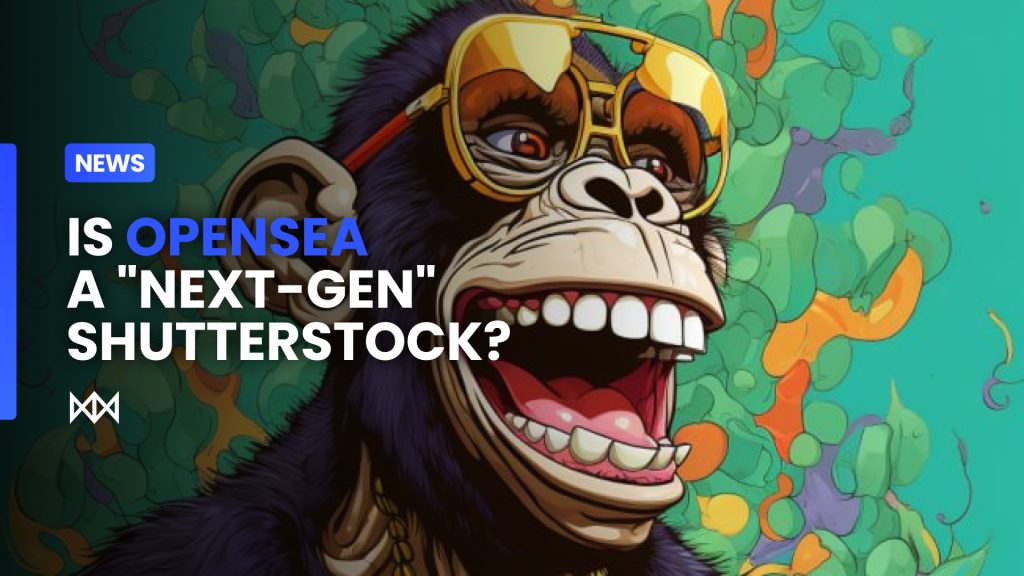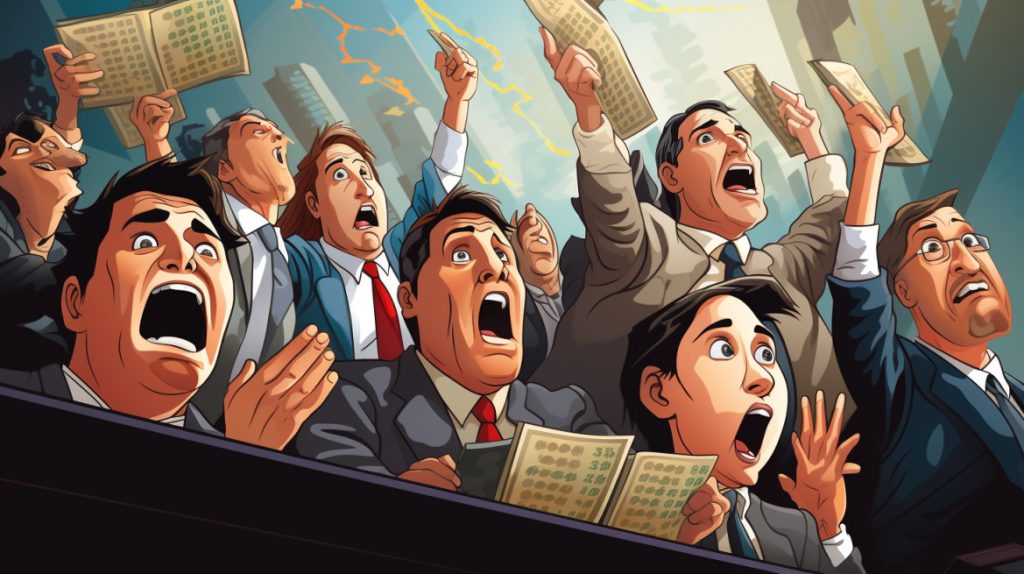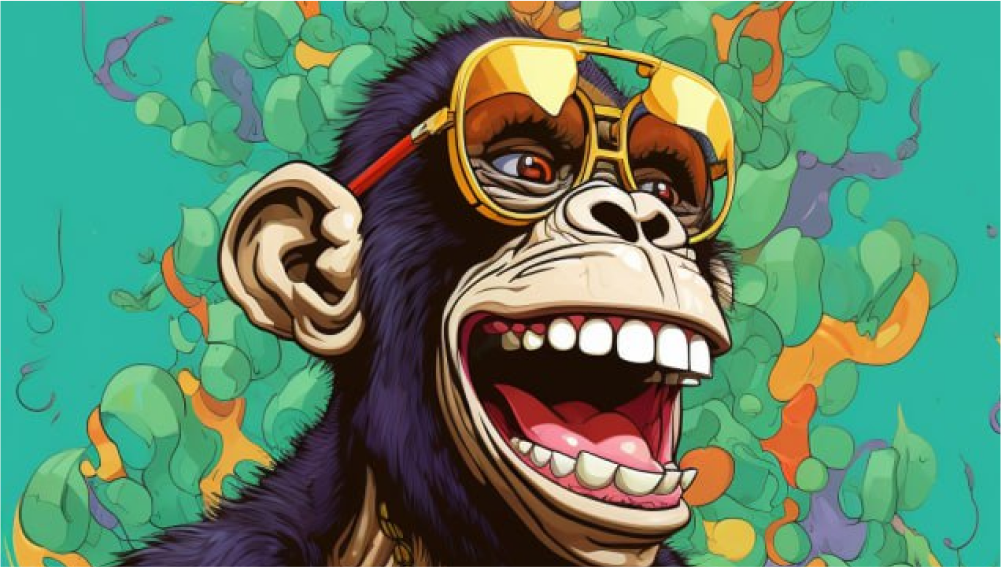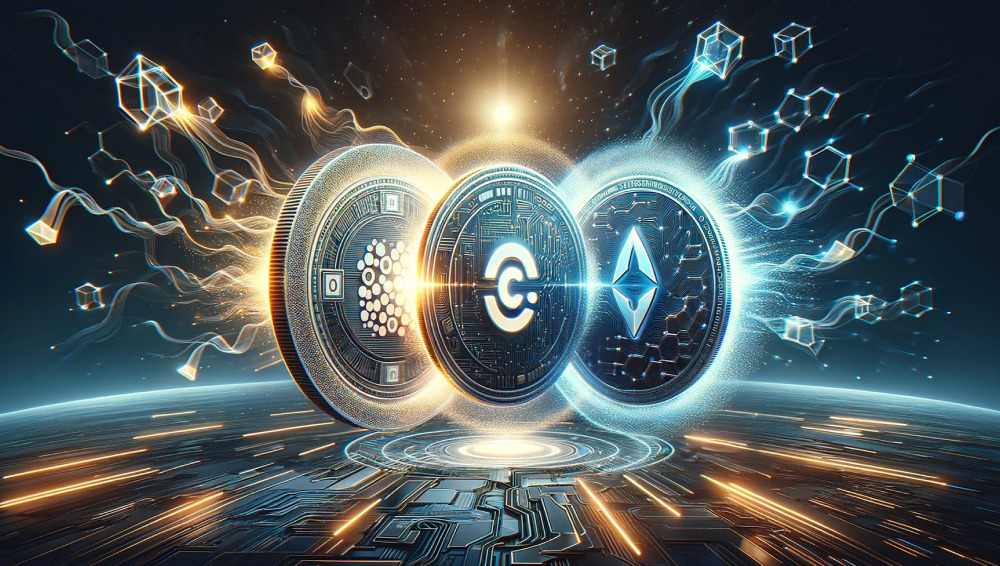Welcome to the past. The dawn of 2021 quakes the ground with an upcoming trend – non-fungible tokens (NFTs). Who would ever bet that a JPEG-like digital item will drive sales worth fortunes? And here we are, Pak’s The Merge successfully sold for $91.8 million on Nifty Gateway in December 2021, as if sealing the heyday of the NFT boom. The first tide of NFT-driven fad ebbed right next year, leaving its mark etched in tech, art, and finance… along with a questionable future.
NFTs vs. Fancy JPEGs – Is OpenSea a “Next-Gen” Shutterstock?

In March 2021, the art landscape was revolutionized when an artist named Beeple auctioned an NFT artwork for a whopping $69 million. This event not only stirred the art community but also impacted the tech sphere and numerous other niches. The subsequent year was nothing short of a whirlwind: NFTs turned artists and enthusiasts into millionaires, brands dabbled in digital promotions, and NFT-themed apes even graced The Tonight Show.
However, recent times have seen a dip in the NFT fervor. The sales have plummeted, and the broader crypto market too has witnessed a decline in value. The average number and value of completed NFT sales on the Ethereum blockchain peaked its short-lived sprint in January 2022 and has been chilling at a languishing standstill ever since.

This shift prompts reflection: Will the initial surge and the communities built during NFT’s heyday persist, or was it merely a fleeting tech trend?
To many, NFTs are just hyped-up images with no intrinsic value. The glitz and grime of (in)famous and a bit snobbish Bored Apes Yacht Club and Crypto Punks does not seldom throw unfavorable light on the entire NFT ethos. Got it. Why should you pay for a relatively useless item? More so with ATH price tags tremendously exceeding the annual income of the average US household. From this perspective, we are left with no other conclusion but to admit the inevitable. OpenSea is a new Shutterstock with less useful images and unreal prices. But there’s another side to this coin (or token, if you will).
Defining the Value of NFTs – Will it stand the test of time?
Essentially, NFTs are not just the fancy pics. If so, they are certainly not living up to their intended potential. A plethora of utility-void AI-generated collections indeed plagued many NFT marketplaces. Right. Yet, robbing NFTs of their real-life utilization undermines the original idea of uniqueness, interoperability, and functionality. What should be the cornerstone properties of NFTs?
- Uniqueness: Each NFT is unique and cannot be replaced by another NFT. This is because each NFT has a unique identifier that is stored on the blockchain.
- Immutability: NFTs are immutable, meaning that they cannot be changed or tampered with once they are created. This is because NFTs are stored on the blockchain, which is a secure and transparent ledger.
- Verifiability: NFTs are verifiable, meaning that anyone can verify the authenticity of an NFT by checking its unique identifier on the blockchain.
- Portability: NFTs are portable, meaning that they can be easily moved from one wallet to another. This makes it easy to trade or sell NFTs.
- Scarcity: NFTs are scarce, meaning that there is a limited supply of them. This scarcity can drive up the value of NFTs.
- Programmable: NFTs can be programmed to do things, such as give the owner royalties on future sales. This programmability can make NFTs even more valuable.
Wide-spread NFT early adoption experiments

Although still in the crib, many mainstream, crypto-unrelated companies are already taking advantage of this emerging technology, utilizing NFTs in their products and business models. From fashion brands, FinTech companies to musicians and the most popular soft drink brands, such as Coca-Cola and Pepsi, all got their hands dirty with NFTs.
Visa, another early adopter, has acquired a CryptoPunk NFT for $150,000. The company has also partnered with several NFT projects, including CryptoKitties and NFLPA Players Inc. Visa has said that it is interested in using NFTs to create new payment and loyalty programs.
Adidas has partnered with several NFT projects, including the Bored Ape Yacht Club and Punks Comic. The company has also released its own line of NFTs, called Adidas Originals: Into the Metaverse while Nike has also gotten involved in the NFT space, acquiring RTFKT, a company that creates virtual sneakers. Nike has also released its own line of NFTs called CryptoKicks.
Coca-Cola has released several NFTs, including a series of NFT bottles and a pixel art design of its logo. The company has also partnered with NFT marketplace OpenSea to create a Coca-Cola NFT community. Pepsi shortly followed suit, releasing several NFTs, including a series of NFT bottles and a pixel art design of its logo. The company partnered with NFT marketplace Rarible to create a Pepsi NFT community.
The music industry isn’t left out, either. The Weeknd has released a series of NFTs to promote his new album, “Dawn FM.” The NFTs include access to exclusive content, such as early access to the album and concert tickets. The metal scene was also introduced to NFTs, with Avenged Sevenfold issuing their collection, Deathbats Club, granting holders access to premium events and merchandise.
The forefront of NFT Utilization: Web3 Games & GameFi leading the way
Among all the segments experimenting with NFT utilization, the gaming industry has stirred the waters most significantly. Axie Infinity, Decentralands, Gods Unchained, or Splinterlands are just the tip of the iceberg. Despite the introduction of a rather dubious and not precisely sustainable Play-to-Earn rewards model, blockchain gaming has gained impressive market value at $4.6 billion in 2022 and is expected to reach $65.7 billion by 2027, registering a CAGR of 70.3% from 2022 to 2027. Despite the recent crypto winter induced hiccups, the growth potential appears prosperous. But why gaming?
NFTs in games represent astounding potential in revolutionizing microtransactions. More precisely, NFTs offer a number of advantages over traditional gaming systems, including genuine ownership, interoperability across platforms, robust second market opportunities, emphasis on rarity and collection, and DAO voting. These advantages can lead to increased player engagement, new revenue streams for game developers, and a more fair and transparent gaming ecosystem.
Moving beyond earning, non-fungible tokens already play a significant role in the user experience of games and their true potential in the industry is yet to be fully realized.
Disclaimer: This article is provided for informational purposes only. It is not offered or intended to be used as legal, tax, investment, financial, or other advice.






